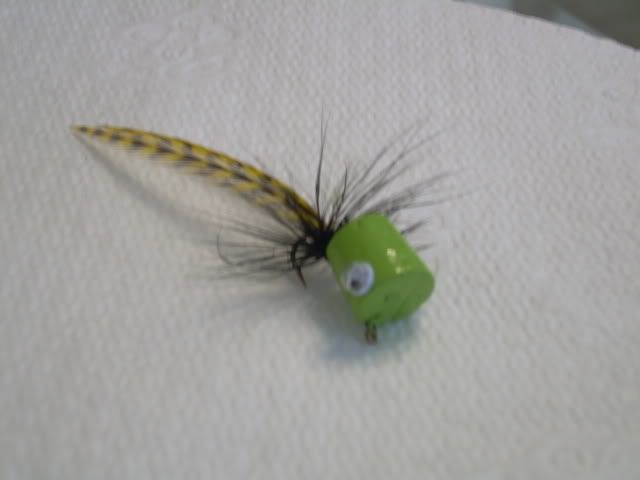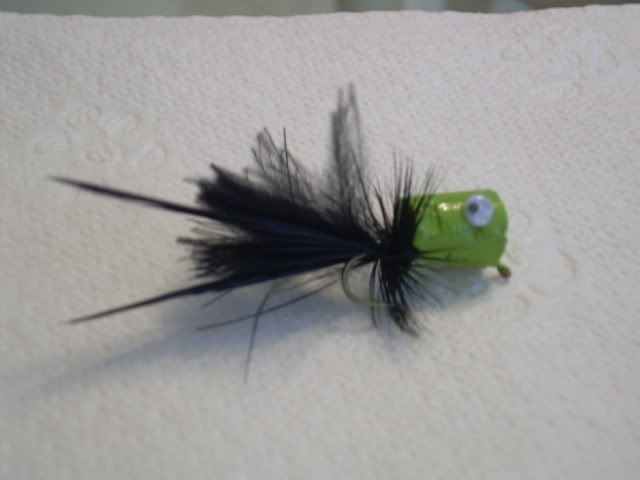Cork has been a popper material of choice for many generations of panfish and bass anglers.
It works, and is kind of nostalgic to use.
Has some drawbacks, though. To get a good finish (not just looks, but to seal it well) you have to use multiple coats of paint/finish. They tend to be a bit fragile, and ‘heavy’ for their buoyancy (some of this due to the finish coats required, no doubt).
Balsa has some of the same issues.
I really prefer foam, but, if you like cork, a couple of ‘hints’ learned from years of playing wih it:
Lacquer, the plain old stuff, is the best finish for cork. Buy it in white as ‘sanding sealer’ from any good paint store. Thin it down 30% with lacquer thinner and ‘dip’ multiple coats to ‘seal’ and smooth the cork. Each coat ‘dries’ in just a few minutes. Lacquer cures in ‘thin’ coats, leaving little in the way of ‘solids’ behind, so it reduces the weight. It will take three or four dipped coats to ‘seal’ the cork.
Add colors either with colored lacquer or markers (colored lacquer is the ‘traditional’ method). If you have an airbrush, you can get some really fantqstic efffects with lacquers. Stetch an piece of old nylon stocking over the body and spray through it to get a ‘scale’ pattern. You can make a stencil from sheet plastic for relistic body side markings. Use a cheap set of drill bits to make eye spots-three color eyes look really cool.
Lacquer finishes will ‘react’ with stuff, like rubber legs or such, so you should add a THIN epoxy top coat to prevent this and protect the finish. Thinned down ‘2-ton’ Devcon Epoxy Glue makes an excellent top coat.
The ‘acrylic’ craft paints sold at any craft store will also work, but they leave ‘heavier’ coats and care must be taken, especially on small bugs’ to keep them from sinking due to ‘too much’ paint ( a lesson I learned the hard way…).
Good Luck!
Buddy
![]()

